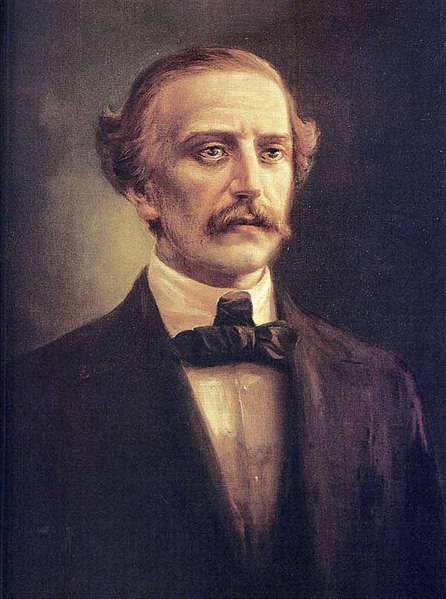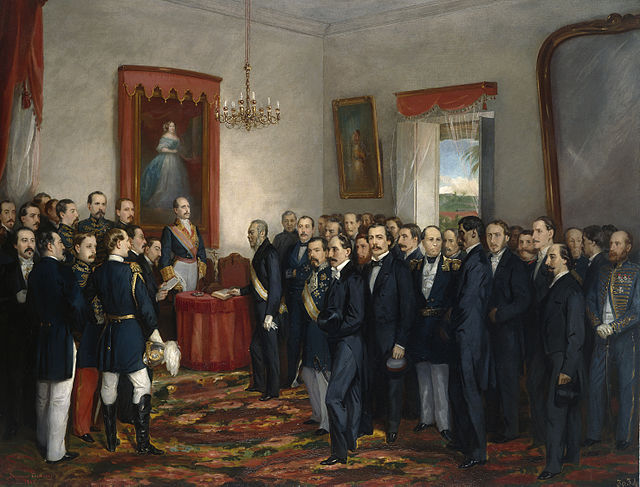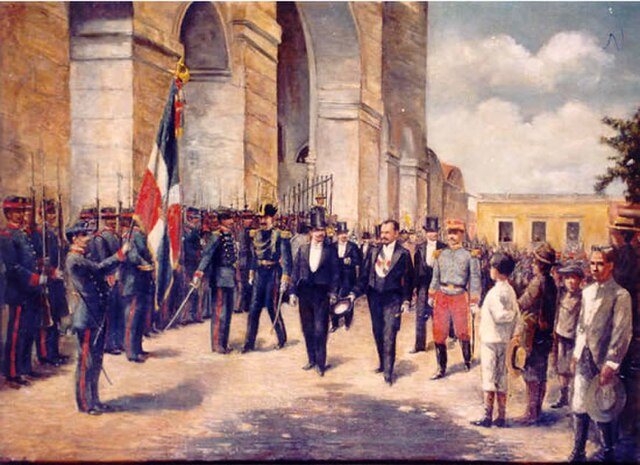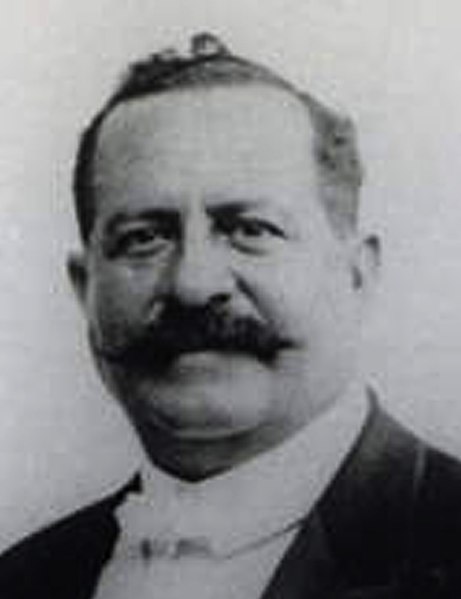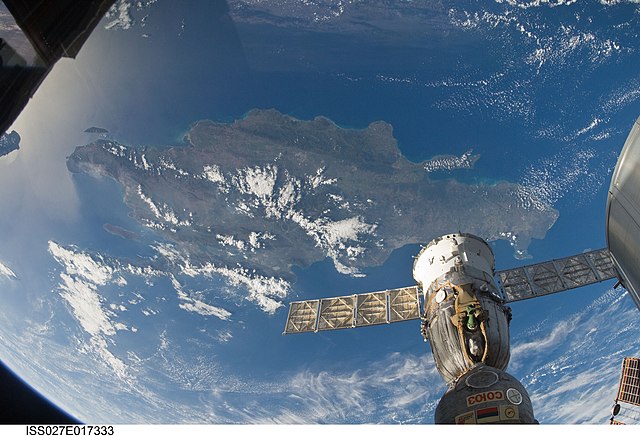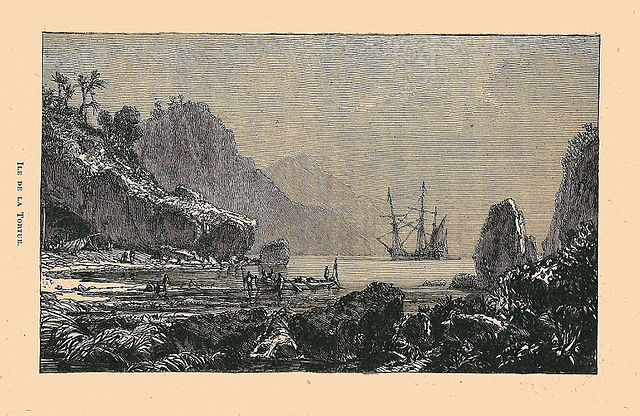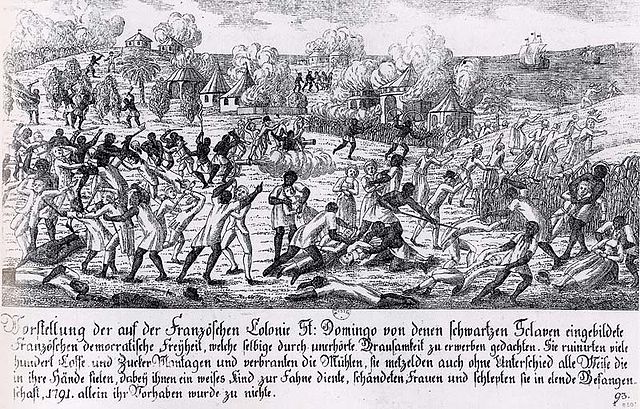The Dominican Republic is a country on the island of Hispaniola in the Greater Antilles archipelago of the Caribbean Sea, bordered by the Atlantic Ocean to the north. It occupies the eastern five-eighths of the island, which it shares with Haiti, making Hispaniola one of only two Caribbean islands, along with Saint Martin, that is shared by two sovereign states. It is the second-largest nation in the Antilles by area at 48,671 square kilometers (18,792 sq mi), and second-largest by population, with approximately 11.4 million people in 2024, of whom approximately 3.6 million live in the metropolitan area of Santo Domingo, the capital city.
Juan Pablo Duarte, founding father of the Dominican Republic.
Pedro Santana is sworn in as governor-general of the new Spanish province.
President Alejandro Woss y Gil taking office in 1903
Ramón Cáceres
Hispaniola is an island in the Caribbean that is part of the Greater Antilles. Hispaniola is the most populous island in the West Indies, and the region's second largest in area, after the island of Cuba. The 76,192-square-kilometre (29,418 sq mi) island is divided into two separate nations: the Spanish-speaking Dominican Republic (48,445 km2 to the east and the French/Haitian Creole-speaking Haiti (27,750 km2 to the west. The only other divided island in the Caribbean is Saint Martin, which is shared between France and the Netherlands.
View from the ISS, 2011
Fortaleza Ozama
Ile de la Tortue (Tortuga island) made Hispaniola a center of pirate activity in the 17th century.
Saint-Domingue slave revolt in 1791

